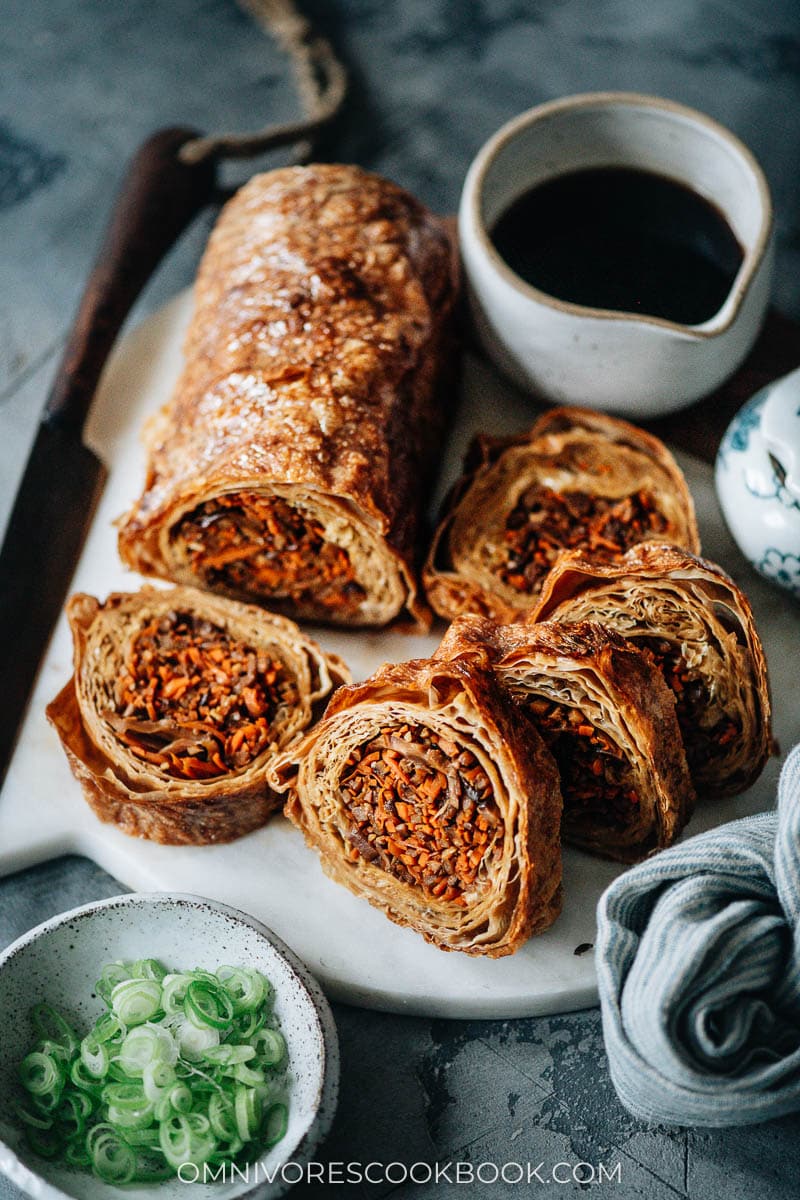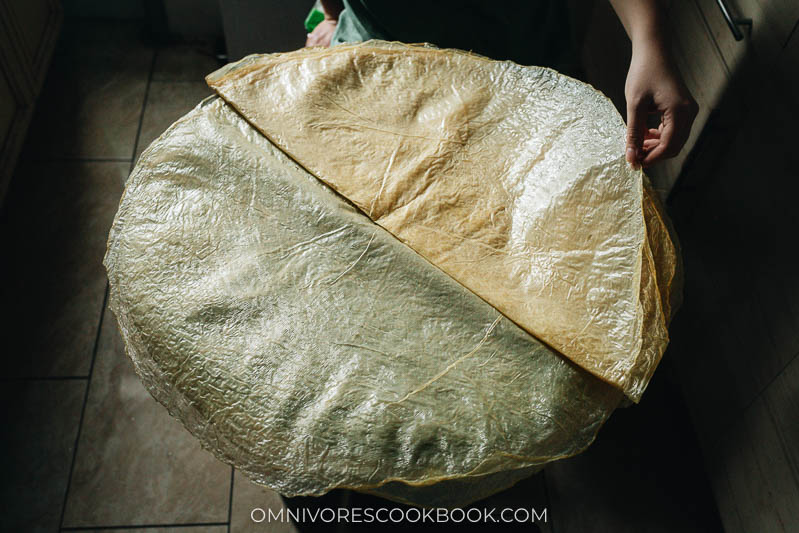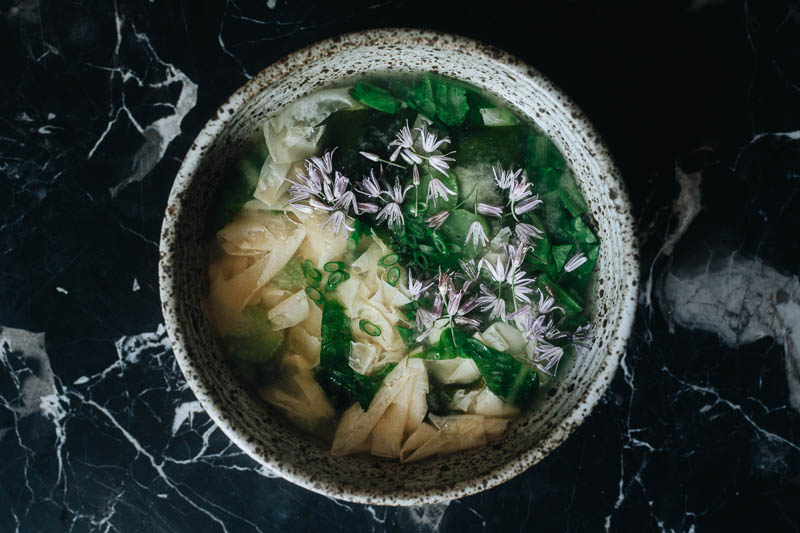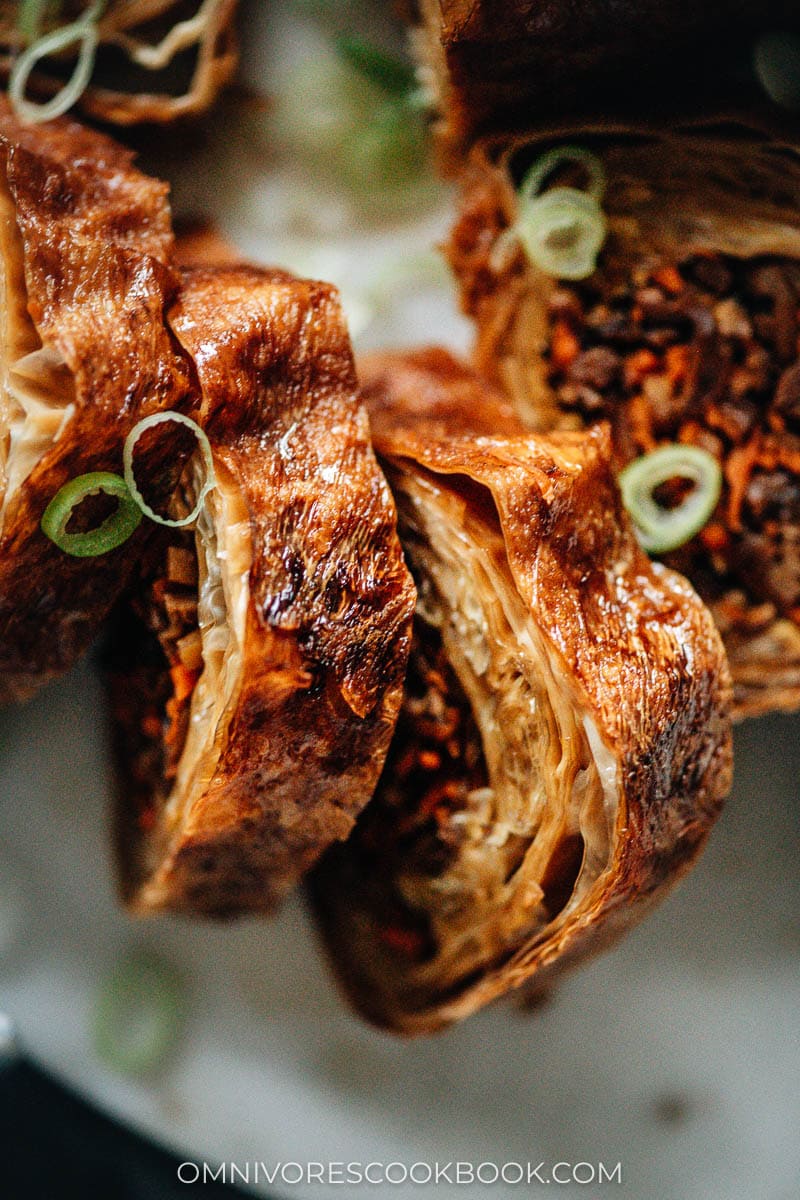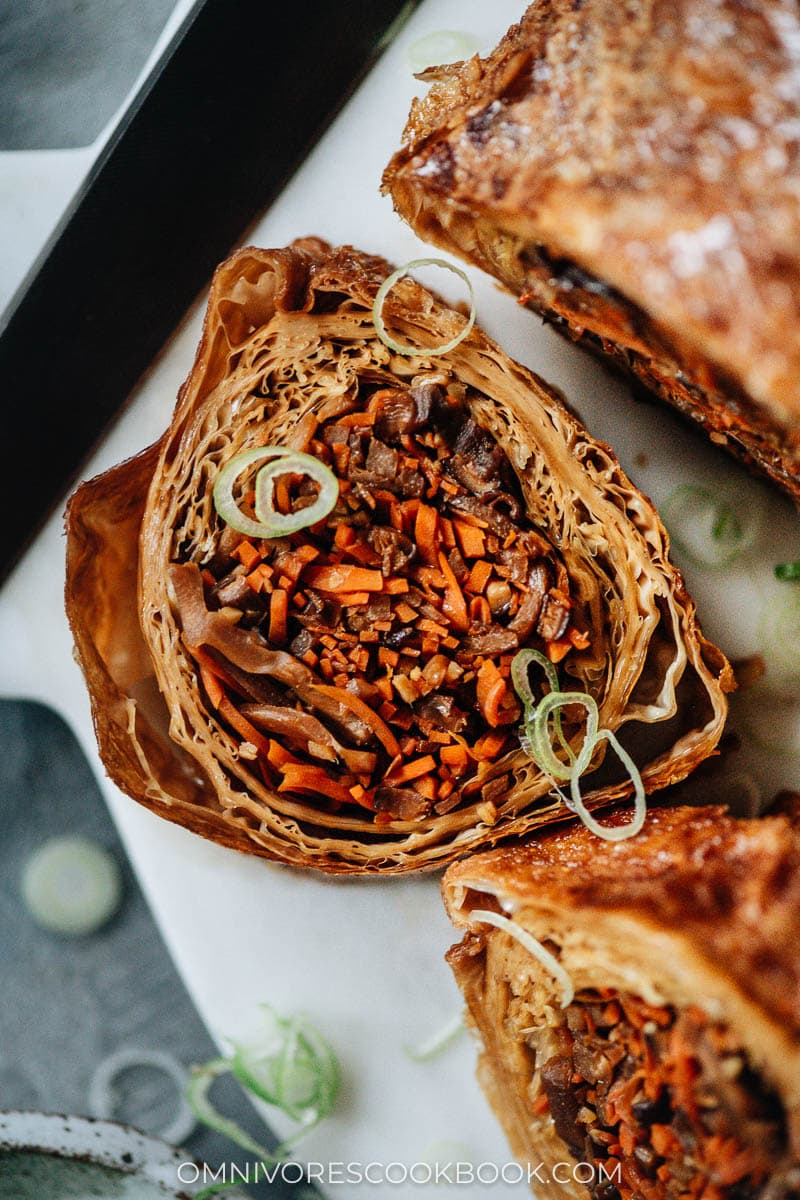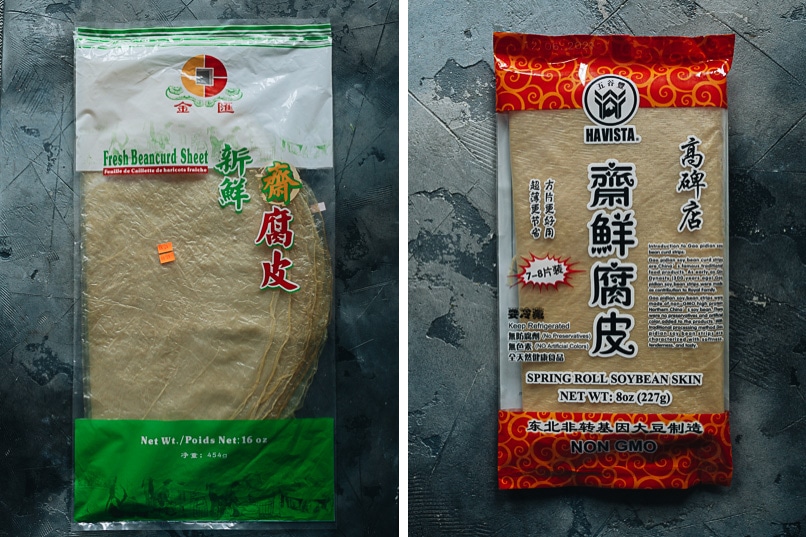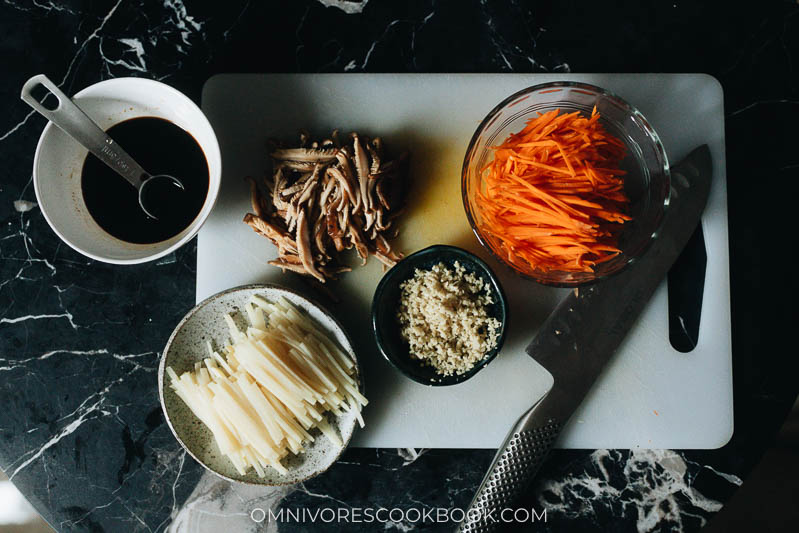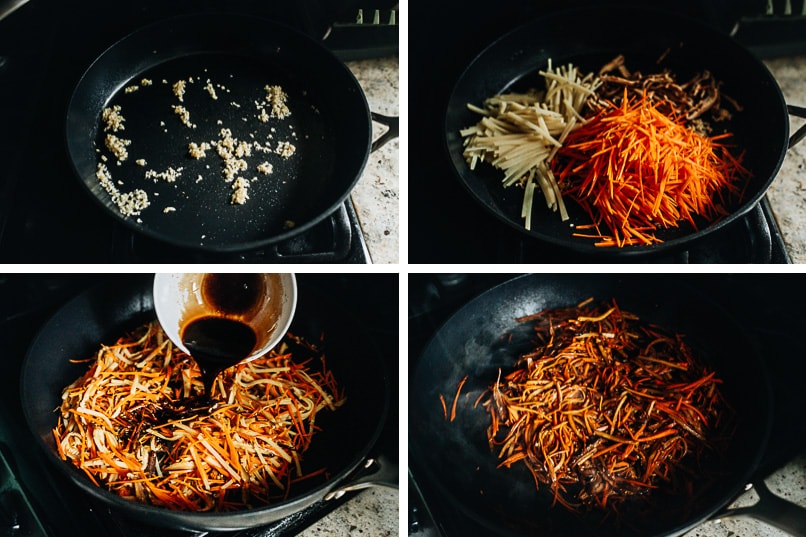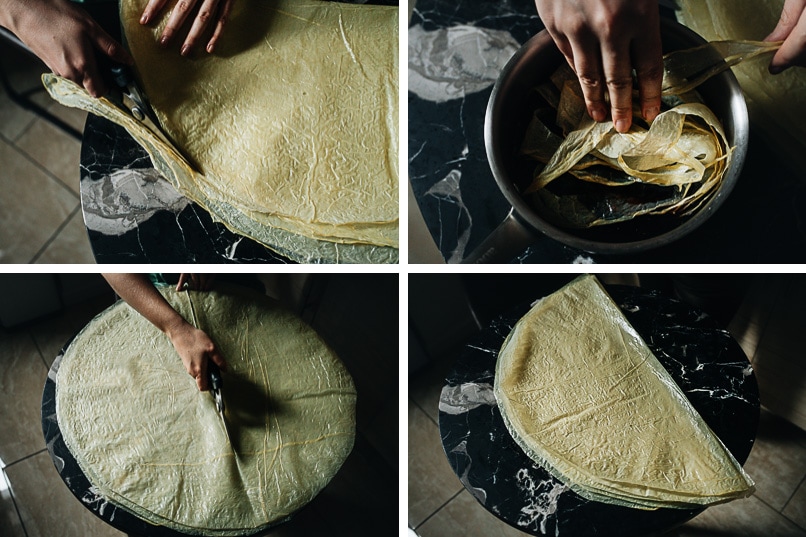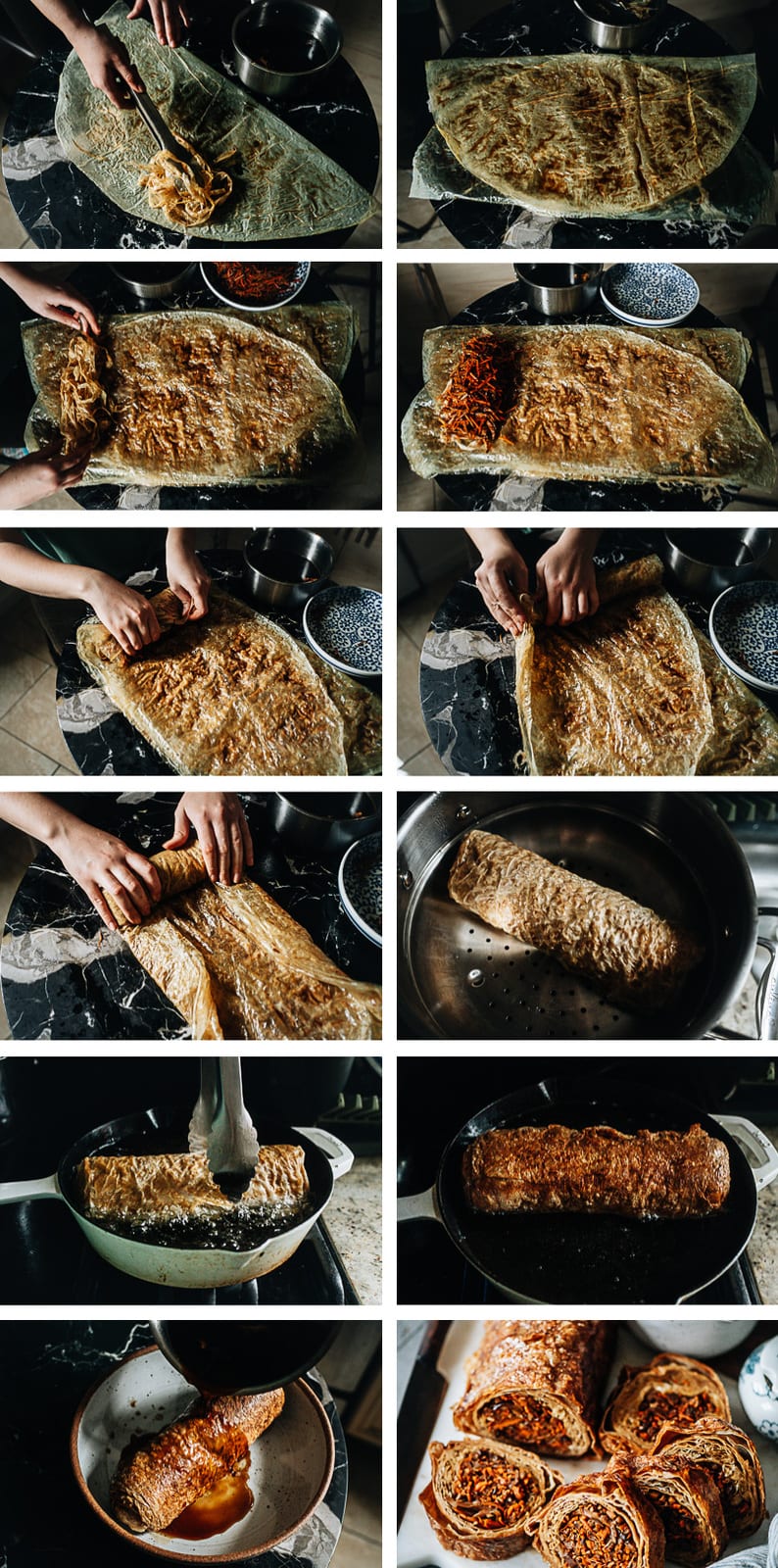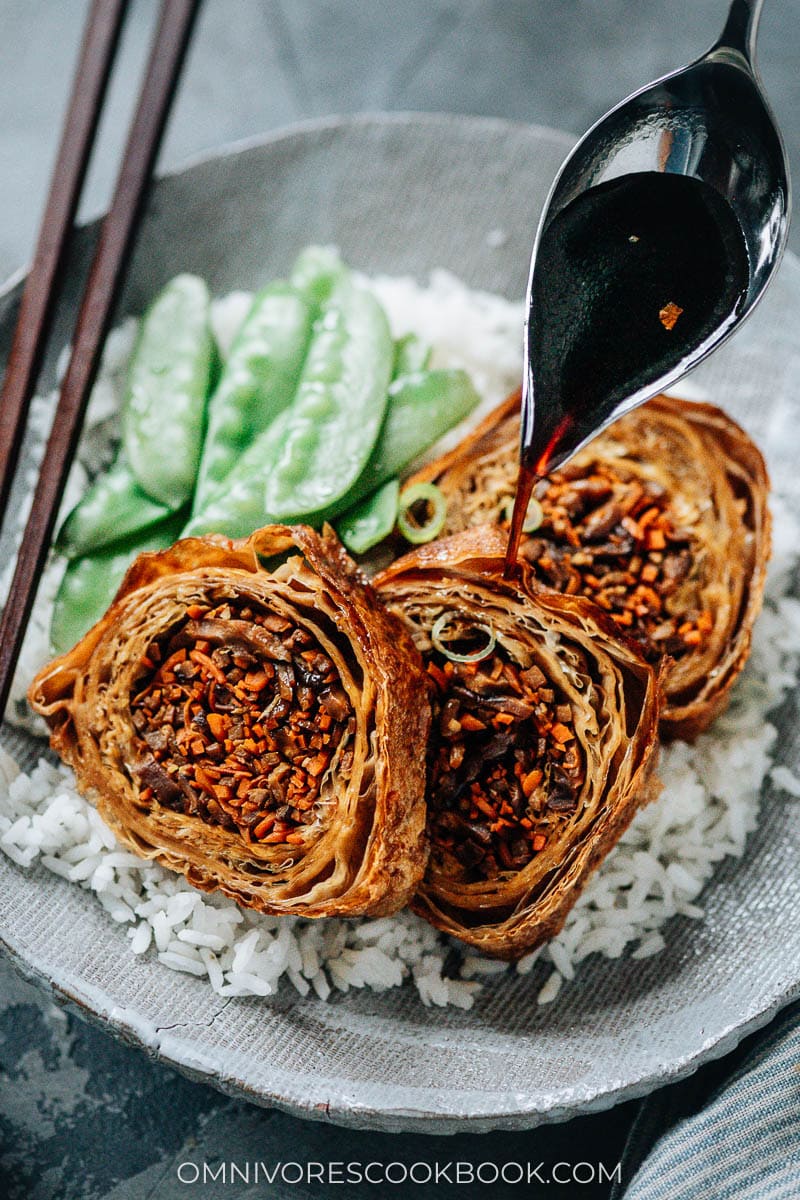Seasoned veggies are cooked and wrapped in yuba sheets, steamed then fried until tender inside and crispy on the outside, then served with a savory sauce. It has a meaty texture on the outside and a dumpling-like filling on the inside. Compared to a traditional holiday loaf that is usually made with seitan and has a homogeneous texture, this one is so much more fun to eat, more delicious, and more nutritious.
Background
Chinese Buddhist cuisine is famous for making mock meat and using various natural ingredients to mimic meat dishes. Despite the fact that vegan meat is gaining popularity worldwide these days, Chinese cuisine started centuries ago (for further reading, refer to this interesting article on Vice). One of the most commonly used ingredients to produce mock meat is soybeans. Not limited to tofu (or fried tofu), you will find soybeans in various forms in a Chinese market. Among them, one of my favorite products is yuba, or dried tofu skin (豆皮), or bean curd sheet, or tofu sheet. It’s the key ingredient to making vegetarian roast duck (or goose).
What is dried yuba
Yuba is a by-product of making soy milk. If you’ve ever made soy milk at home, you’d notice a thin layer of film appears on top of the milk if slightly chilled. That is yuba in its wet form. Once dried, it will become a paper-thin semi-transparent firm-ish sheet that can be folded and stored for a longer period of time. There are many ways to use dried yuba. You can simply cut it and add it to the soup (or hot pot). It will be fully rehydrated and cooked within seconds, and generate a tender yet meaty texture. Compared to tofu, yuba cooks faster, absorbs flavor better, and has a more meat-like mouthfeel. One of our dinner staples is veggie miso soup (especially after my husband converted to plant-based). And I always enjoy adding some cut-up yuba strips to the soup to add an egg-like texture.
Make mock meat using yuba
If you’ve ever been to a vegan Chinese restaurant (my favorite is Buddha Bodai in Manhattan Chinatown) or even a regular Chinese restaurant, you can usually find vegetarian duck or goose made with folded yuba sheets and sometimes stuffed with veggie filling. It’s a traditional Shanghai dish that is usually served as an appetizer. Because of yuba’s special texture, when folded and cooked, it will yield a texture that is similar to poultry skin. It’s a bit chewy on the inside, crispy on the outside, and full of flavor.
Vegan loaf inspired by a traditional vegetarian roast duck
Traditional vegetarian roast duck is usually a small dish and served as an appetizer. When I read the recipe from Land of Fish and Rice: Recipes from the Culinary Heart of China by Fuchsia Dunlop, I was intrigued by her folding method. It is not the easiest recipe but it makes a much bigger loaf, which seems perfect to serve as a centerpiece during the holiday season for a vegan / vegetarian themed party. After many rounds of testing, we changed up the recipe by using more vegetable filling with slightly different ingredients. It makes a bigger loaf, better texture and a more balanced taste.
Shop for yuba
You can usually find two types – the round shape (image on the left) and the square shape (image on the right). The brand on the right is my favorite because it does not contain preservatives and tastes slightly better. This recipe uses the round type, but you can also use the square one as well.
Cooking process
Making the vegetarian roast duck definitely requires some time and effort, but the end result is totally worth it.
Part 1 – prepare the filling
You will need to slice the carrots and bamboo shoots into strips. For an easier and faster process, you can use a julienne peeler for the carrot. Once prepped, you will need to cook the filling by:
Part 2 – Prepare the yuba sheets
Note: if you’re using the square yuba, you can simply cut it into two big rectangles.
Part 3 – Assemble and cooking
A word on the cookware
It’s best to find a tall pan (e.g a large dutch oven) that just fits the loaf for the frying process, to prevent the oil from splattering and to minimize oil usage. That’s why it’s important to measure the loaf while folding it, to make sure that it can fit into your pan. Once you’re done cooking, you should serve the vegetarian roast duck as soon as possible to maximize texture and mouthfeel. After you pour over the sauce, the “duck skin” will not remain super crispy but it will still have a nice chewy texture. The filling is rich and crunchy, paired perfectly with the meaty skin.
Afterthought
I admit this is a relatively complicated recipe and it’s definitely for special occasions. But once you’ve tried it, I guarantee you that it’s so much better than the typical seitan holiday loaf that is rubbery and plain. The shallow frying is not the easiest step, but it’s important to do it so the layers of skin will puff up and create a better texture. If you’re feeling adventurous, you can totally use the same ingredients to make a smaller vegetarian roast duck (the regular size served at Chinese restaurants). You will need to use half of the filling and half of the sheets to make two individual parcels, and reduce the cooking time by two thirds. It will make the cooking process much easier.
More delicious vegan holiday recipes
Kung Pao CauliflowerEight Treasure Rice (八宝饭, Chinese Rice Pudding)Crispy Marinated TofuCurried Vegan Green Bean Casserole Homemade Vegan Dumplings (素菜锅贴)Vegan Mango Pudding
Want to learn more about Chinese Cooking? Sign up my newsletter to receive the 5-Day Chinese Cooking Crash Course and recipe update! If you give this recipe a try, let us know! Leave a comment, rate it (once you’ve tried it), and take a picture and tag it @omnivorescookbook on Instagram! I’d love to see what you come up with.
More vegan recipes
Home Style Tofu (家常豆腐)Chinese Scallion Pancakes (葱油饼)Bok Choy SoupChinese Pickled Cucumber (A Quick Pickle Recipe)Instant Pot Lentil Soup (Chinese Style)
Lilja Walter is a part of the Omnivore’s Cookbook team and worked closely with Maggie to develop and test this recipe.
